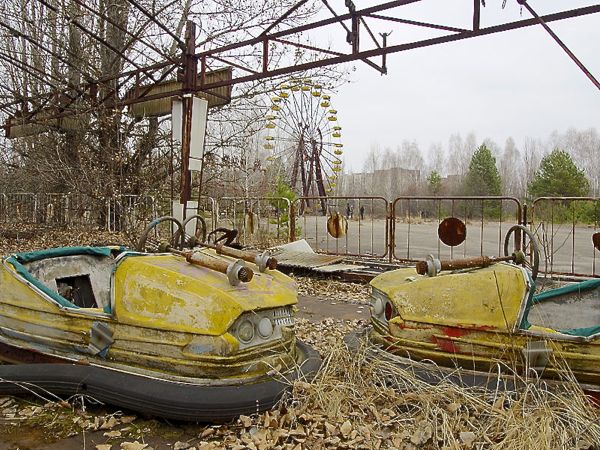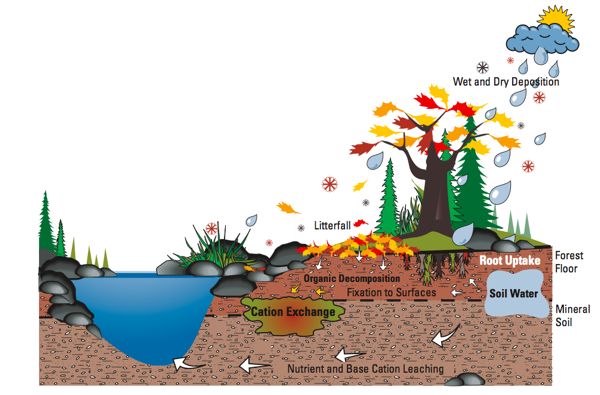Where Have They Been As Christie Privatizes, Deregulates, Cuts Budgets, & Ignores Environmental Justice?
While I tried to convey the context and implications of the USGS dual sexed fish study, I’ve been laying low and waiting for someone to either explain the Flint catastrophe or opportunistically use it to call for reforms.
Rutgers professor and former DEP manager Dan Van Abs has risen to the occasion today in a NJ Spotlight Op-Ed:
First off, Mr. Van Abs should be applauded for making the effort to learn and share the lessons of Flint.
That effort contrasts with the stunning silence and abject failure of leadership by NJ DEP regulators, private water companies, water professionals, academics, and public officials in local, state and federal governments who are responsible for managing NJ’s drinking water.
But let’s not get carried away with praising Mr. Van Abs for what should be a moral responsibility and duty to speak out against gross injustice and wrongdoing.
Praise noted, let me now expand upon and point a finer point on some of these issues raised by Van Abs.
In comments on a Jan. 22., 2016 NJ Spotlight story, I noted:
The Christie DEP policy and response to drinking water issues is no different than the response of Flint Michigan.
There are striking parallels:
1) obsession with costs over public health
2) scientific and regulatory decisions made by incompetent, untrained, and inexperienced government officials
3) denial and downplaying of the problem
4) failure to seriously listen to the public
5) forcing what should be state decisions to the local level
6) politics and anti-government ideology infecting science and regulatory policy decisions
But, upon reflection, I left some big things off that list, like:
- privatization (like Gov. Christie’s Executive Order and legislative initiative, which were sold as a cost cutting option, and not to provide cleaner and safer water)
- anti-Democratic and racist State control (like we see in many poor and black NJ cities, including Newark, Camden and Atlantic City)
- austerity (like Gov. Christie’s veto of new revenue measures and cuts to state government)
- anti-regulatory ideology (like Gov. Christie’s Executive Orders $1 – #4).
Since I wrote those comments, even more damning facts have emerged that make the situation worse than I had imagined at that time and go far beyond what Mr. Van Abs calls the “bad” scenario, i.e. “the total collapse of the regulatory system for Flint.”
Evidence has emerged that shows the Governor’s Office and state regulatory officials not only knew about the problem for many months and swept it under the rug, but that they intentionally failed to respond, while at the same time taking steps to protect State employees from drinking water risks.
[Update: 2/26/16 – The NY Times finally catches up with the story, see:
The selective protection of state employees reminded me of the Paulsboro toxic train derailment, when the DEP official would not send DEP emergency response staff into the accident scene due to high levels of toxic gas. Or of the armed State Park Police officer assigned to patrolling the lobby of the DEP building in Trenton.
They take care of their own.
I won’t go into details here, but note that Van Abs pulls his punches, which is troubling in two distinct ways: first, as a University professor, Van Abs enjoys the safe employment perch, intellectual freedom, and responsibility of a truth telling institution, the Academy.
Second, Van Abs describes himself as a “former regulator”, a position from which he gained “inside” special knowledge that is not available to the public, which he has a duty to share.
While Van Abs correctly noted ethical and moral failures in Flint, as a former regulator he fails to out the skeletons he knows exist in NJ’s drinking water closets.
Bones from those closets most recently emerged in the release of the USGS study that found dual sexed fish, reporting on more delays at the NJ Drinking Water Quality Institute, and DEP’s release of the Clean Water Act mandated Statewide Water Quality Report.
Water resource professionals in NJ know full well that the public has been drinking those same endocrine disrupting chemicals (EDCs) that poison the dual sexed fish the USGS found; that USGS has studied EDC’s since the late 1990’s; and that US EPA has done nothing to regulate to protect consumers from those harmful exposures to EDC in their drinking water.
Van Abs is not only silent on opening this can of worms, he actively perpetuates the problem, e.g. note that when he mentioned that Camden had secured an alternative water supply source to dwindling groundwater, he identified the supply as “surface water”.
The “surface water” in question was the Delaware River – a river that is probably not as polluted or corrosive as the Flint River, but a river nonetheless.
The Delaware is also a river that receives millions of gallons per day of wastewater discharge from sewage treatment plants that spew all sorts of EDC’s and other unregulated contaminants into the river. Those chemicals then pass through conventional drinking water treatment systems and go directly to the bodies of consumers, including the developing fetus’ of pregnant women.
The Delaware is not alone as a water supply source that is polluted by hundreds of unregulated chemicals and EDC’s: so too are the Passaic, Ramapo, and Raritan rivers.
Like Van Abs, I too am a “former regulator”, but in contrast, I’ve made numerous efforts to share inside knowledge and concerns about NJ’s drinking water, many summarized in this recent post.
That includes mention of the policies of Governor Christie, the political power of the pharmaceutical and chemical industries to derail regulation, and the policy failures of the DEP and EPA.
But the flaws in Van Abs’ piece are more serious than technical obfuscations and failures to out the skeletons in the Gov.’s Office and DEP’s closets.
There is a smug and self serving CYA operating in how Van Abs chooses to not disclose the fact that he and his Dodge Foundation funded flunkies have focused on NJ’s urban water issues since the outset of the Christie Administration.
Yet, despite this well endowed white bread effort, they have completely failed to focus on the issues brought to the fore in Flint Michigan, including: structural racism, poverty, environmental injustice, austerity, unregulated chemicals, endocrine disrupting chemicals, river water quality, wastewater treatment plants, childhood lead exposure, lack of adequate treatment of drinking water, or a host of related urban water and public health issues.
They have mis-focused and ignored critical issues, and for self serving reasons or rank cowardice.
On top of those failures, they have failed to criticize or effectively oppose any of the Christie Administration’s systemic rollbacks of drinking water and clean water protections.
Instead, they had focussed on “combined sewer overflows” and the costs and methods of financing infrastructure deficits and pet project, like oyster restoration, including advocating a gentrifying and racist urban redevelopment agenda as the means to finance the program.
All that failure is masked beneath the surface of Van Abs self serving missive on the lessons of Flint Michigan.
Let me close by repeating the frustration and disgust of my prior post on the USGS dual sexed fish study:
Finally, I must note that NJ environmental groups have largely abandoned this kind of traditional meat and potatoes work on clean water, DEP regulation, and facility permits, and public health risks from toxics.
The abandonment began long ago (see: Clean Water Anyone?) – no one showed up!
Environmental groups have been manipulated by Foundation grant money that has diverted them from these controversial issues and instead been funded to work on politically safe issues that don’ threaten powerful chemical and pharmaceutical industries and their friends in State government, like sustainability, the Delaware Watershed (Wm Penn and Dodge Foundations) and the Dodge Foundation funded “The Raritan Initiative”, which Rutgers has shamefully joined as well.
You simply do not see well informed and hard hitting critiques like this anymore – they have been defunded by the Foundations and abandoned by the environmental groups.
Pronunciation) is an abandoned city in northern Ukraine, near the border with Belarus.



